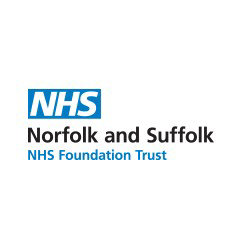
Norfolk and Suffolk NHS Trust and BT case study
Read how Norfolk and Suffolk NHS Trust chose BT to deliver a business intranet project to meet its launch deadline.
Formed by the merger of Norfolk and Waveney Mental Health NHS Foundation Trust and Suffolk Mental Health Partnership NHS Trust, Norfolk, and Suffolk NHS Foundation Trust is responsible for providing a range of specialist services that are dedicated to the care and recovery of anyone experiencing mental ill health or substance misuse issues – this can be up to 14,000 people at any one time.
The challenge
Norfolk and Suffolk NHS Foundation Trust recognised that many of its service users, particularly those in the younger age groups, are very IT literate and prefer to use the internet to gather information and interact with the Trust by using services like drop-in centres.
As a result, it secured funding as part of its wellbeing programme to deliver a specialist website (ready to change) that would give users access to advice and live interaction with clinical staff via IM, as well as the opportunity to self-refer. The site had to be delivered in under a month and launched as part of the wellbeing Service launch.

The solution
Extending the Microsoft SharePoint platform
Having worked with BT to deliver an internal Microsoft SharePoint-based intranet, the Trust decided that the collaboration tool would be the best platform on which to build its new external-facing wellbeing website.
Formalising objectives
In securing the funding, the Trust had agreed on a formal set of objectives and requirements around what the website had to deliver.
These included online help capabilities and access to live advice via IM, as well as a self-referral centre that integrated with the SharePoint-based intranet and workflow – all of which had to be ready for the wellbeing programme launch.
Leigh Welch, Technical Project Manager at the Trust, explained: “We had just three and a half weeks to build, test and deploy the new website, in order to meet our obligations under the wellbeing programme. We had a clear set of deliverables that had been agreed in advance, but worked with BT to scope the project and quickly formalise the project plan.”
Agile design in action
Using a form of agile design, BT quickly began developing the website, working closely with both the IT team and the Trust’s clinicians in order to ensure the site met the objectives and could be delivered in tight timeframes.
Basing the website on the Microsoft SharePoint platform, it developed each element in sequence, giving it a distinct look and feel, and ensuring it was easy to use. As part of the development, BT integrated SharePoint with Microsoft Lync Server – the unified communications platform – for the first time. This allowed the delivery of live IM sessions with counsellors for registered service users and meant that additional communications tools could be added when required.
Seamless access and workflow integration
Using SharePoint, the website gives users secure access to a self-referral portal that feeds into a workflow and allows them to book appointments, replacing the admin-intensive paper-based appointment system.
As each element of the project was signed off from a technical perspective, it then went through user assessment and governance checks for security, as Alan Vigus, Head of ICT Services at the Trust explained: “As we were using clinical data linked to an external platform, security and keeping data secure was a major consideration for us on this project.
As a result, on completion of each phase, we brought in external auditors to run rigorous penetration tests on the site to the highest level of security required by the NHS. Each time, the site passed easily and we received very positive feedback from the testers.”
Why BT?
The Trust had built a long-term relationship with BT and the teams had worked together on a number of projects, developing a good working relationship, as Welch explained: “The BT team worked as an extension of my team, but had the in-depth technical knowledge to come up with workable solutions to the challenges we faced, and was able to deliver them within tight timeframes. For this particular project, they were both essential.”
The website was successfully launched on schedule at an event for the Trust’s wider wellbeing programme, and provides all of the services outlined in the original proposal.
“BT brought a ‘can-do’ attitude to the project, the team working long hours with my team in order to ensure the project was delivered on time. There was also a huge amount of thought that went into each aspect of the website, which meant that it achieved exactly what we were looking for – both functionally and aesthetically,” explained Welch.
We’re the first Trust in the UK to combine all of these elements together in a single platform, and we couldn’t have achieved that without BT.
“We’ve received incredibly positive feedback from everyone who’s looked at or used the website - particularly the live session and self-referral capabilities,” added Vigus.
Delivering services across multiple channels is part of Norfolk and Suffolk NHS Foundation Trust’s wider strategy and the website will be an integral part of service delivery over the next few years. Being based on Microsoft SharePoint and Lync Server allows the Trust to extend and edit capabilities as required.
“Being Microsoft certified, the BT team understood the products and what they could do intimately, which meant that we could achieve our goals in the simplest and most cost-effective way, whilst being really innovative in our approach - and delivering something unique,” concluded Welch.



